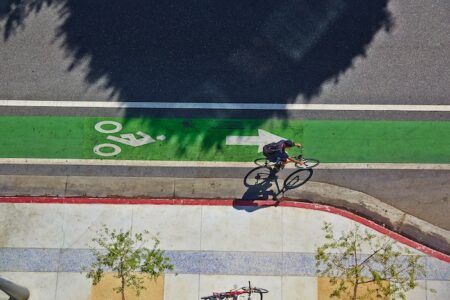An innovative mobility research project aims to improve demand prediction models for mobility-on-demand services using lidar sensors and inexpensive cameras to route electric shuttles in Cambridge, Massachusetts, toward areas displaying the greatest need based on data-driven models.
Ford Motor Company and the Massachusetts Institute of Technology (MIT) are collaborating on a new research project that measures how pedestrians move in urban areas, in order to improve certain public transportation services, such as ride-hailing and point-to-point shuttle services. The project will introduce a fleet of on-demand electric vehicle shuttles that operate on both city roads and university campus walkways in Cambridge, Massachusetts. The vehicles use lidar sensors and cameras to measure pedestrian flow, which helps predict demand for the shuttles. This, in turn, assists researchers and drivers in routing shuttles toward areas with the highest demand in order to better accommodate riders. Furthermore, the collaboration will help Ford and MIT demonstrate the algorithms and methods employed to navigate densely crowded pedestrian areas.
The MIT research is being conducted by the MIT Aeronautics and Astronautics Department’s Aerospace Controls Lab (ACL), which researches topics related to autonomous systems and control design for aircraft, spacecraft and ground vehicles. Theoretical and experimental research is pursued in such areas as estimation and navigation, planning and learning under uncertainty, and vehicle autonomy. Ford and MIT researchers plan to introduce the new service to a group of students and faculty members beginning in September, which will use a mobile application to hail one of three electric urban vehicles to their location and request a drop off at another destination on campus. The electric vehicles are small enough to be able to navigate the campus’s sidewalks while still leaving plenty of room for traditional pedestrian traffic.
During the past five months, Ford and MIT have used lidar sensors and cameras mounted on the vehicles to document pedestrian flow between different points on campus. Lidar is the most efficient way to detect and localize objects from the environment surrounding the shuttles. The technology is much more accurate than GPS, emitting short pulses of laser light to precisely pinpoint the vehicles’ location on a map and detect the movement of nearby pedestrians and objects. Using this data, researchers study the overall pattern of how pedestrian traffic moves across campus, which helps them anticipate where the greatest demand for the shuttles will be at any given moment. This allows the shuttles to be carefully pre-positioned and routed to serve the MIT population as efficiently as possible. Researchers also take into account other factors that affect pedestrian movement on MIT’s campus, such as varying weather conditions, class schedules, and the dynamic habits of students and professors across different semesters.
“The onboard sensors and cameras gather pedestrian data to estimate the flow of foot traffic,” said Ken Washington, vice president of research and advanced engineering at Ford. “This helps us develop efficient algorithms that bring together relevant data. It improves mobility-on-demand services, and aids ongoing pedestrian detection and mapping efforts for autonomous vehicle research.”




